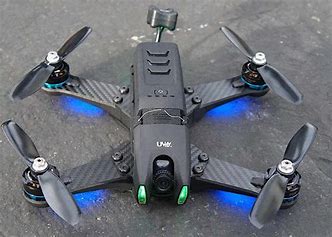Some of different types of drones based on their design and purpose:
1. Multirotor Drones: These are the most common type of drones, often referred to as quadcopters. They have four rotors, but there are also hexacopters (six rotors) and octocopters (eight rotors). Multirotor drones are versatile, capable of hovering in place, maneuvering in tight spaces, and capturing stable aerial footage.

2. Fixed-Wing Drones: Unlike multirotor drones, fixed-wing drones have a winged structure similar to traditional airplanes. They rely on forward motion to generate lift and can cover long distances more efficiently. Fixed-wing drones are commonly used for mapping, surveying, and surveillance purposes.

3. Single-Rotor Helicopters: These drones have a single large rotor, typically used in professional applications such as cinematography, industrial inspections, and military operations. Single-rotor drones are known for their ability to hover, fly in challenging weather conditions, and carry heavier payloads.

4. Hybrid Drones: Hybrid drones combine features of both multirotor and fixed-wing designs. They are capable of vertical takeoff and landing (VTOL) like multirotor drones, but they can also transition into forward flight like fixed-wing drones. This allows for longer endurance and increased range compared to traditional multirotor drones.

5. Nano and Mini Drones: These are small-sized drones designed for indoor or close-quarters flying. They are often lightweight, maneuverable, and used for recreational purposes or as beginner-level drones for learning to fly.

6. Racing Drones: Racing drones are built specifically for high-speed competitions. They are lightweight, agile, and equipped with first-person view (FPV) systems that provide a real-time video feed to the pilot, enabling them to navigate through challenging courses.

7. Professional and Industrial Drones: These drones are designed for specialized applications such as aerial photography, cinematography, surveying, inspections, agriculture, and public safety. They often have advanced features, high-resolution cameras, thermal imaging capabilities, and the ability to carry specialized payloads.

Each type of drone has its own advantages and is suitable for different tasks and environments. The choice of drone depends on the specific requirements and intended use.